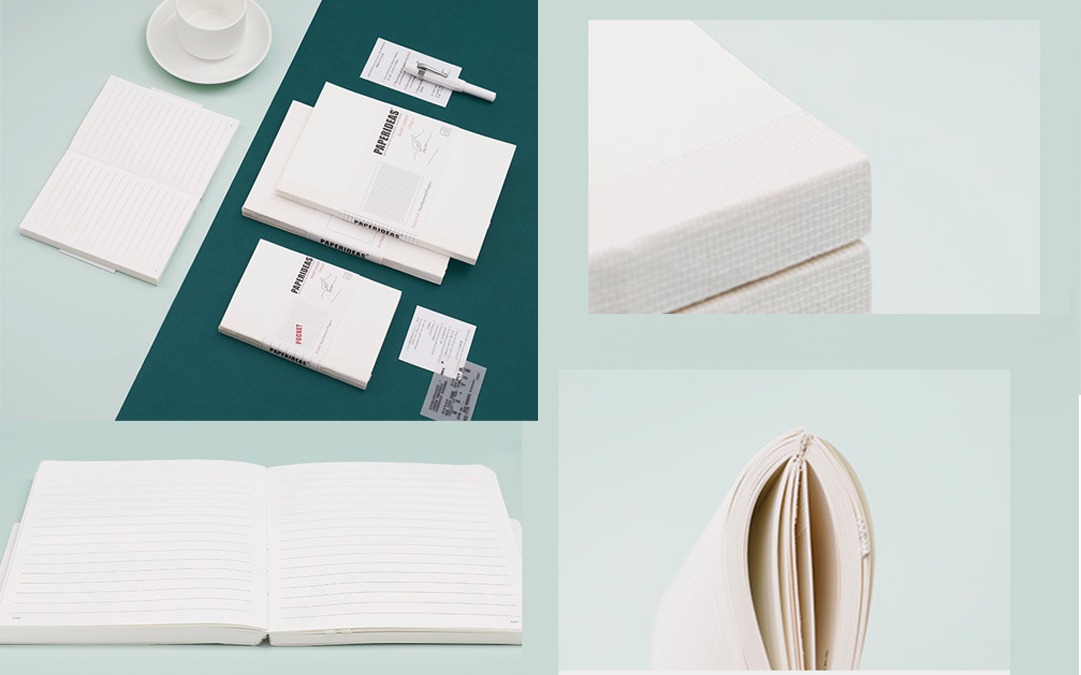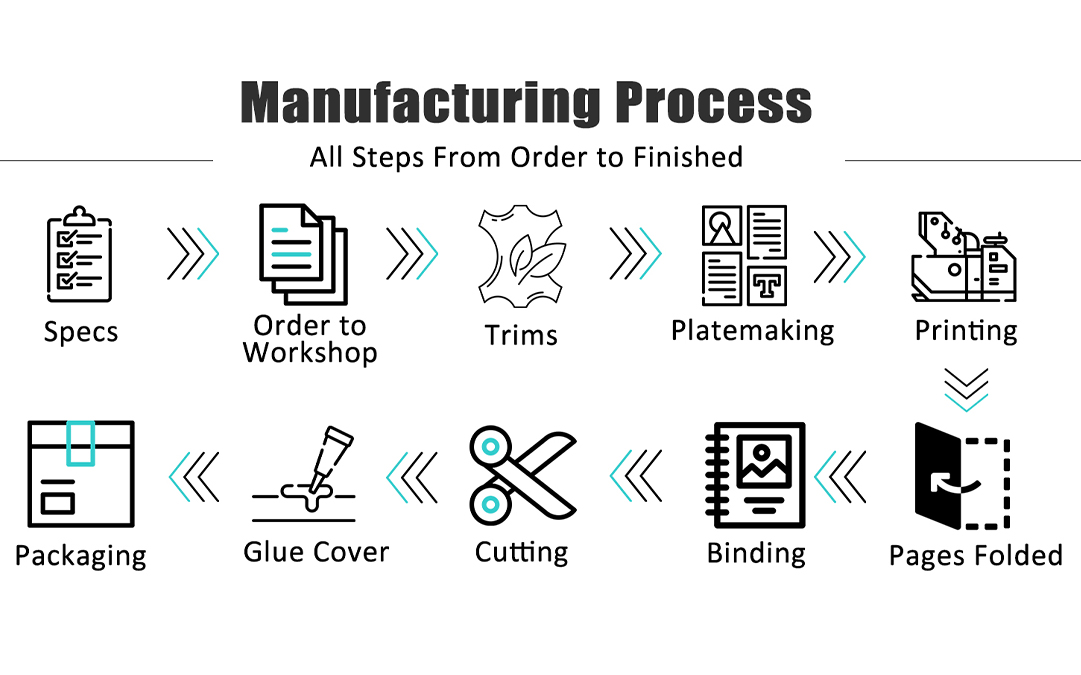How to Maintain Consistency Across Multiple Print Runs in Weekly Planner Printing
Maintaining consistency across multiple weekly planner print runs is crucial in the notepad printing industry. It ensures that every batch of products meets the high standards that customers expect. Over the years, I’ve honed my processes to guarantee uniformity and quality in every print run. Here are the ten key steps I take to maintain consistency in my notepad printing business.
1. Understanding Color Management
Color management is fundamental to achieving consistency in print runs. I employ advanced color calibration tools and standardized color profiles to ensure that colors remain consistent across different print batches. Regularly calibrating my monitors and printers allows me to match digital proofs to the final printed product accurately, minimizing discrepancies. Using industry-standard color management systems like ICC profiles helps achieve accurate color reproduction across different devices and materials. This practice ensures that the vibrant reds, deep blues, and other colors in my designs remain true to the original artwork, regardless of the print batch.
In addition to regular calibration, I use color measurement devices like spectrophotometers to monitor and control color consistency throughout the printing process. These devices provide precise color data, enabling me to make necessary adjustments in real-time. By integrating these tools into my workflow, I can maintain a high level of color accuracy and consistency, ensuring that each print run meets the expected quality standards.
2. Maintaining Equipment Regularly
Regular maintenance of printing equipment is essential to ensure consistent print quality. I schedule routine checks and servicing for my printers to keep them in top working condition. This preventive maintenance approach helps avoid unexpected breakdowns and ensures that the print quality remains uniform over time. Clean machines produce cleaner prints, reducing the risk of inconsistencies.
I maintain a detailed log of maintenance activities, including the replacement of parts such as print heads and rollers. This proactive approach helps identify potential issues before they escalate, thereby maintaining the reliability and efficiency of the printing process. Additionally, I follow manufacturer guidelines for maintenance and use only recommended parts and consumables, which further contributes to the longevity and performance of my equipment.
By investing in regular maintenance, I not only extend the lifespan of my machines but also ensure that they consistently deliver high-quality prints. This attention to detail helps maintain the overall consistency and reliability of my printing operations.
3. Using High-Quality Materials
The quality of materials used in printing significantly impacts the consistency of the final product. I always choose high-quality paper and ink for my notepad prints. By sourcing materials from reputable suppliers, I can trust that each batch of paper and ink will perform similarly, reducing the chances of variation between print runs.
Before committing to large-scale use, I test new batches of materials to ensure they meet my stringent quality standards. Consistent material quality contributes significantly to the overall appearance and durability of the notepads, enhancing customer satisfaction and repeat business.
I also work closely with my suppliers to ensure that the materials meet specific requirements for color, texture, and weight. This collaboration helps in maintaining a high level of consistency across all print runs. By using premium materials, I can deliver products that not only look great but also stand the test of time, reinforcing my reputation for quality and reliability.
4. Implementing Quality Control Processes
Quality control is a critical aspect of maintaining consistency in printing. I conduct regular inspections during and after print runs to identify and address issues such as color discrepancies, misalignment, and print clarity. By checking for these issues early on, I can make necessary adjustments immediately, ensuring that each print run meets the same high standards.
I employ a multi-tiered quality control approach where multiple team members inspect the prints at different stages. This redundancy helps catch errors that might be overlooked by a single inspector, ensuring that the final product is flawless and consistent with previous runs. Additionally, I use quality control software to track and document inspection results, which helps in identifying patterns and areas for improvement.
By maintaining a robust quality control process, I can ensure that every print run meets the high standards expected by my clients. This commitment to quality helps build trust and long-term relationships with customers, who can rely on me for consistent, high-quality products.
5. Standardizing Printing Procedures
Standardized procedures are key to achieving consistency in printing. I document every step of the printing process, from setup to execution, including specific settings for each type of job. By following these documented procedures, I can replicate the conditions of a successful print run, ensuring uniformity across multiple projects.
I create detailed checklists and workflow diagrams that serve as quick references for my team. This ensures that everyone follows the same protocol, reducing variability and increasing efficiency in our printing operations. Additionally, I review and update these procedures regularly to incorporate new best practices and technological advancements.
By standardizing procedures, I can minimize errors and ensure that each print run is consistent with previous ones. This systematic approach not only improves efficiency but also enhances the overall quality and reliability of my printing services.
6. Training and Development
Investing in staff training is another critical step in maintaining consistency. I ensure that all team members are well-versed in the standardized procedures and understand the importance of consistency. Regular training sessions help keep everyone updated on the latest best practices and technologies in the printing industry.
I encourage my team to attend industry workshops and certification programs. Continuous learning not only improves their skills but also introduces new techniques and technologies that can enhance our printing processes. By fostering a culture of learning and development, I can ensure that my team is always equipped with the knowledge and skills needed to maintain high consistency standards.
Additionally, I provide ongoing feedback and support to my team, helping them understand their roles in maintaining consistency. This collaborative approach helps build a strong, knowledgeable team that is committed to delivering high-quality, consistent print products.
7. Calibrating Printers and Monitors
Calibrating printers and monitors is a step I never skip. Regular calibration ensures that what I see on the screen matches the final printed product. This alignment is crucial for maintaining color accuracy and overall print quality, making sure that every run looks just as intended.
I use advanced calibration tools and software that provide precise adjustments. By calibrating on a schedule and after any major changes in equipment or environment, I ensure that the colors and details in my prints are always consistent and true to the original design. Additionally, I monitor environmental factors such as lighting and temperature, which can affect color perception and printer performance.
By maintaining a consistent calibration process, I can ensure that every print run meets the highest standards of color accuracy and quality. This attention to detail helps build trust with clients, who can rely on me for consistent, high-quality prints.
8. Establishing Clear Communication with Clients
Clear communication with clients is vital for meeting their expectations consistently. I ensure that all specifications are clearly understood and documented before starting the print job. This includes color preferences, paper type, and any special instructions, which helps in delivering consistent results that meet client standards.
I provide clients with proofs and samples before the final run, allowing for any necessary adjustments. This step ensures that the final product aligns perfectly with the client’s vision, reducing the risk of reprints and dissatisfaction. Additionally, I maintain open lines of communication throughout the project, keeping clients informed of progress and addressing any concerns promptly.
By establishing clear and effective communication with clients, I can ensure that their needs and expectations are met consistently. This collaborative approach helps build strong relationships and fosters long-term customer loyalty.
9. Conducting Test Prints
Before a full print run, I always perform test prints. These preliminary tests help identify any potential issues early on. By reviewing the test prints, I can make necessary adjustments to the settings or materials, ensuring that the final product will be consistent with previous runs.
I compare these test prints with samples from earlier runs to ensure that the quality and appearance match exactly. This extra step acts as a final check, ensuring that the final production run maintains the high standards and consistency my clients expect. Additionally, test prints provide an opportunity to experiment with new techniques or materials, allowing me to innovate while maintaining quality.
By conducting thorough test prints, I can ensure that each print run is consistent and meets the high standards of quality expected by my clients. This proactive approach helps prevent issues and ensures that the final product is always of the highest quality.
10. Keeping Detailed Records
I keep detailed records of each print run, including machine settings, materials used, and any issues encountered. These records are invaluable for troubleshooting and replicating successful print runs. By referring to past records, I can ensure that each new project aligns closely with previous successful ones, maintaining a high level of consistency.
These records help in identifying patterns or recurring issues, allowing me to make informed decisions on improving processes and preventing future inconsistencies. I use digital tools and software to manage and analyze these records, making it easier to track performance and implement improvements.
By maintaining comprehensive records, I can ensure that every print run is consistent and meets the high standards expected by my clients. This meticulous documentation is a cornerstone of maintaining quality and reliability in my printing business.
Conclusion
Maintaining consistency across multiple print runs in the notepad printing industry requires a comprehensive approach. By focusing on color management, regular equipment maintenance, using high-quality materials, implementing stringent quality control processes, standardizing procedures, investing in staff training, calibrating printers and monitors, establishing clear communication with clients, conducting test prints, and keeping detailed records, I can ensure that every print run meets the highest standards of quality and consistency. This commitment to excellence helps build trust with clients and fosters long-term success in the printing business.
Contact Us: Ms. Rimo Lau WhatsApp Me
Whatsapp: 0086 18336352791 – WeChat&Phone
Website: www.fullcolorprintstationery.com
E-Mail: [email protected]





